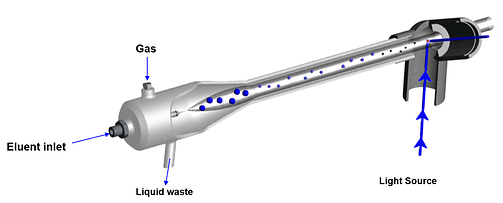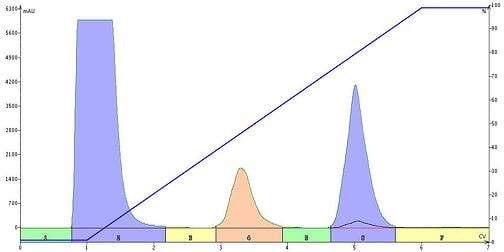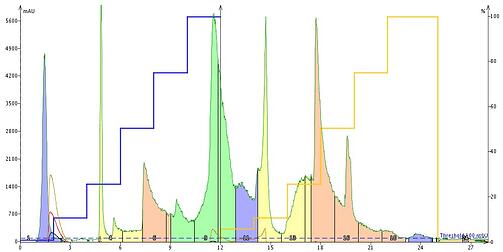Compound detection challenges are, for many chemists, a part of life. In a previous post I discussed how wavelength focusing can help your flash system detect and fractionate compounds with poor chromophores. However, compounds naked to UV-Vis light, such as carbohydrates, are impossible to detect by UV when separating by liquid chromatography.
There are some alternatives, however, and in this post I will discuss the application of evaporative light scattering detection (ELSD) to flash purification.
Over my career I have had to opportunity to discuss various chromatography challenges with many chemists. One area that is problematic to chemists is carbohydrate detection. I personally dealt with these challenges in my role as an applications chemist many years ago. I had been tasked with creating a method and optimizing a separation of monosaccharides. What I learned was an amine-based stationary phase using acetonitrile + water + ammonium hydroxide provided a good separation but for detection my only viable option at the time was Refractive Index (RI).
The RI technique works fine if the mobile phase is held constant (isocratic). Also, factors like temperature, flow rate, and pressure need to be stable as well. In flash chromatography, RI isn’t really a great option as most methods are gradient-based.
So, if RI is not a viable option what is? Well, you can collect all of the effluent and do LC-MS or TLC with a stain/reaction (Fehling's perhaps) or, better yet, add an evaporative light-scattering detector (ELSD) to your flash system.
The ELSD does not require that your compound has a chromophore. The ELSD detects by first generating an aerosol from a portion of the column eluent. A flow of nitrogen gas is added to the cartridge effluent and the resulting aerosol is directed in to a piece of heated tubing where the solvent is evaporated, Figure 1. Since solvent evaporation is facilitated using a heated nitrogen stream even water can be easily removed.

Figure 1. Inner workings of a Biotage ELSD. Cartridge effluent is split enabling a small portion to enter the ELSD where an aerosol is generated and the solvent evaporated leaving behind particles detectable by a light source.
What remains suspended in the gas flow are particles of dried material. These particles then pass a light source and are detected. The intensity of the light scattered by the particles is measured by the detector and is proportional to the number and size of the particles present. ELSDs can be used in parallel with ultraviolet (UV) detectors if your samples contain both UV absorptive and transparent compounds, Figure 2.
Figure 2. Artificial sweetener separation by reversed-phase flash chromatography with ELSD and UV detection (200 nm (black trace) and 254 nm (red trace)). The first two peaks, dextrose and maltodextrin, are totally UV transparent but are easily detected by the ELSD (green trace). Only aspartame has any UV absorption capability but ELSD is more sensitive.
ELSD is insensitive to mobile phase composition because the solvents are removed during evaporation so it is critical that ELSD be used to detect low-volatility compounds. Because the solvents are evaporated in the ELSD, complex gradient elution methods can be used such as the multiple step gradient example shown in Figure 3.
Figure 3. ELSD was used in normal-phase flash chromatography to detect UV-transparent petroleum additives in gasoline. The highly complex nature of this material required the use of an A-B and B-C gradient where A=hexane, B=ethyl acetate, and C=methanol.
ELSD has proven to be an excellent detector for UV-transparent compounds. The only downside to ELSD is that it is a destructive detector meaning you cannot recover what is detected. So, you need to split the flow such that most goes to the fraction collector and little goes into the ELSD, a minor inconvenience if you ask me.
For more information on flash chromatography, download our whitepaper - Inspiring Productivity with Modern flash Chromatography



